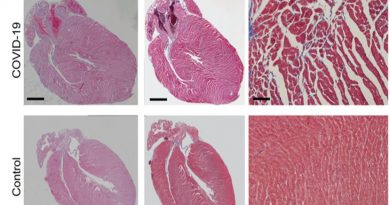Improving the interpretation of spinal cord magnetic resonance images

A group of researchers with the Joint Research Unit of Biomedical Image of the Foundation for the Promotion of Health and Biomedical Research of Valencia Region (Fisabio) and the Príncipe Felipe Research Center Foundation (CIPF) has developed a software to improve the automatic detection of anatomic structures in the spinal cord magnetic resonance images.
Existing methods do not have the capacity to detect elements such as vertebrae, intervertebral discs, nerves or blood vessels. So the main objective of this study was to solve these problems based on the use of automatic segmentation of magnetic resonance images.
Semantic segmentation consists of the use of an algorithm capable of associating a category to each pixel present in an image. In this case, it is useful to differentiate the pixels in an image corresponding to vertebrae, nerves, etc.
Jhon Jairo Saénz Gamboa, principal author of the article, explained, “The high prevalence of lumbalgia and the great anatomic detail provided by a lumbar spine magnetic resonance image makes it a valuable tool in detecting bone and spinal cord abnormalities. In this regard, the method used to highlight interesting structures, organs and pathologies is segmentation.”
The article, titled “Automatic Semantic Segmentation of Structural Elements related to the Spinal Cord in the Lumbar Region by Using Convolutional Neural Networks,” was presented by Jhon Jairo Sáenz Gamboa, María de la Iglesia-Vayá and Jon Ander Gómez Adrián at the 25th International Conference on Pattern Recognition. This is one of the main world conferences about advances in the fields of pattern recognition, computer learning and computer vision.
Today, the process to analyze spinal cord magnetic resonance images starts with an inspection by a radiologist. Then, semantic segmentation to improve the diagnosis must be done by a data engineer or scientist taught by experts in radiology.
“This way of interpreting images is slow and subject to variability depending on the observer. That is why the development of automatic methods capable of reliably detecting and quantifying backbone structures and tissues has raised great interest. The aim is to provide radiology services the inspection of these images, improve the safety of diagnosis and reduce the time required to do it,” says Jhon Jairo.
The study has solved some of the problems with existing methods. For example, it achieves high-quality semantic segmentation that can be used as a starting point to segment more magnetic resonance images by hand.
Jairo said, “The automatic detection of vertebrae structures will facilitate diagnoses based on pathogenesis (consideration of all the elements involved in the development of a disease) thanks to the inclusion of structural findings in interdependent neighboring regions.”
The discovery of structural correlations will help to find the pathological links required to understand backbone disease and drive new treatments.
This work could improve the sensitivity of interpreting magnetic resonance images in patients with spinal cord damages, which will have a great diagnostic and prognostic significance in the progress of the lesion in response to the treatments, according to Victoria Moreno, leader of the group Neuronal and Tissular Regeneration at CIPF, where she researches new therapies for the treatment of this kind of lesions.
Convolutional Neural Networks
The technology proposed in this work is based on the application of convolutional neural networks (CNN). Convolutional neural networks are a deep learning algorithm trained with images and assigning importance to certain elements within them to differentiate them from each other.
Jairo said, “Our system makes a high-quality semantic segmentation that detects up to 11 different structures in the lumbar region, while the present algorithms are only focused in automatically segmenting the vertebrae or discs.”
Simultaneous segmentation of multiple structures has great clinical importance because since it considers the damage in different areas, it permits establishing pathological correlations.
Source: Read Full Article



